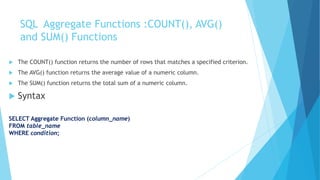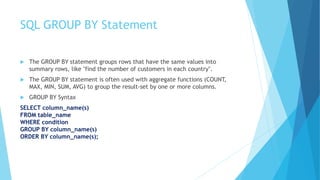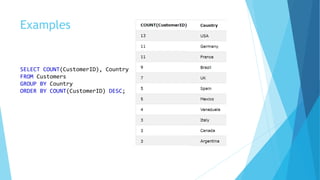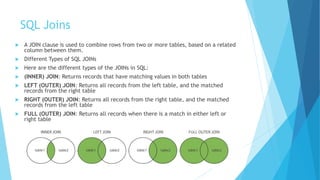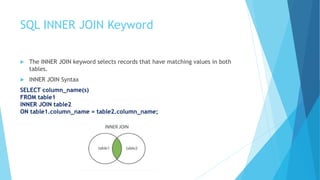The document discusses various SQL concepts including aggregate functions like MIN(), MAX(), COUNT(), AVG(), and SUM(); the GROUP BY clause; the HAVING clause; different types of joins like inner joins, outer joins, full outer joins; and examples of queries using these concepts.



